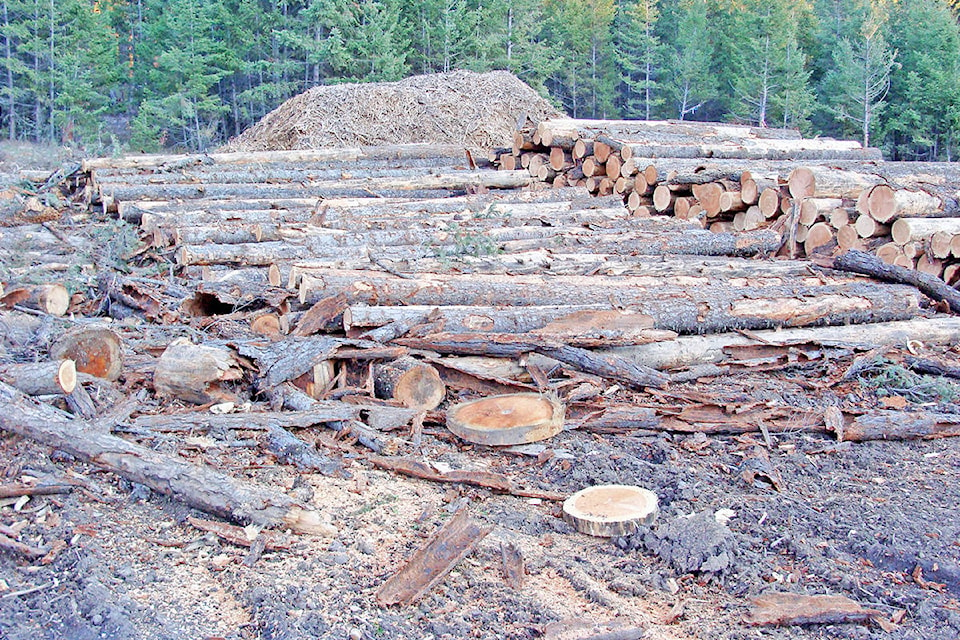After reviewing the recent coverage of the provincial government’s attempts to deal with climate change I was surprised that there was little mention of potential options in the forest industry.
For example a recent government report estimates that there could be up to 54 million oven dry tons (ODT) over a 10 to 20 year period (2.7 million ODT per year) of forest material that could be used by new forest industries which could help mitigate the loss of traditional timber lost to insect attack and wildfires. Up to now most of this material has been burned in slash piles so any use of this biomass could help reduce carbon emissions while providing a new source of employment. A joint project between the Inventory Section and FPInnovations produced maps and costs involved to bring this material to designated delivery centers in the 11 Timber Supply Areas (TSA) of the province.
READ MORE: Fast growing hybrid hardwoods could help in future biomass plants
For example in the Williams Lake TSA there was 250 thousand ODT per year of material available at the most economic delivery rate of 60 dollars per ODT. The majority of this material was available from the Anahim Lake and Hanceville delivery points with a much smaller portion from the Williams Lake and Horsefly delivery points.
One of the major concerns with the impending reduction in the Annual Allowable Cut is the reduction of residual material from the local lumber mills which provided material for power plants, pellet plants and pulp mills. While we can only estimate how much the residual material will be reduced I used two approaches to come up with an estimated deficit of 120,000 ODT per year for the Atlantic Power and Pinnacle Pellet plants.
Using the data from the report I could only get about a third of the material needed from the most expensive source (105 dollars per ODT) when using only the material delivered to the Williams Lake delivery center. I could easily make up the shortfall if I used some of the material for the adjacent Horsefly and Hanceville biomass but was not able to determine a final delivery cost.
READ MORE: Plenty of areas to study to create fire breaks
It may take input from the authors of the report to determine more precise delivery costs in particular situations described above. There could also be additional material from fire proofing and stand rehabilitation projects.
For its part the government is encouraging companies who may require some of the residual material in the future to form business-to-business relationships with primary harvesters which will lead to more cost effective “one pass” harvesting systems. If this is not possible the district manager has a number of discretionary options to assist industries seeking residual biomass.
For example establishment of fibre recovery zones where primary harvesters are required to provide notice declaring If they will be using the residual fibre, and whether or not they are abandoning their rights to the residual fibre.
Two new licences were also established along with a “do not destroy order”.
While bioenergy may be important for some provinces production from all urban and harvest residues would only supply an estimated four per cent of the total energy used in Canada according to (Paré et al. 2010).
Jim Hilton is a professional agrologist and forester who has lived and worked in the Cariboo Chilcotin for the past 40 years.
Now retired, Hilton still volunteers his skills with local community forests organizations.
